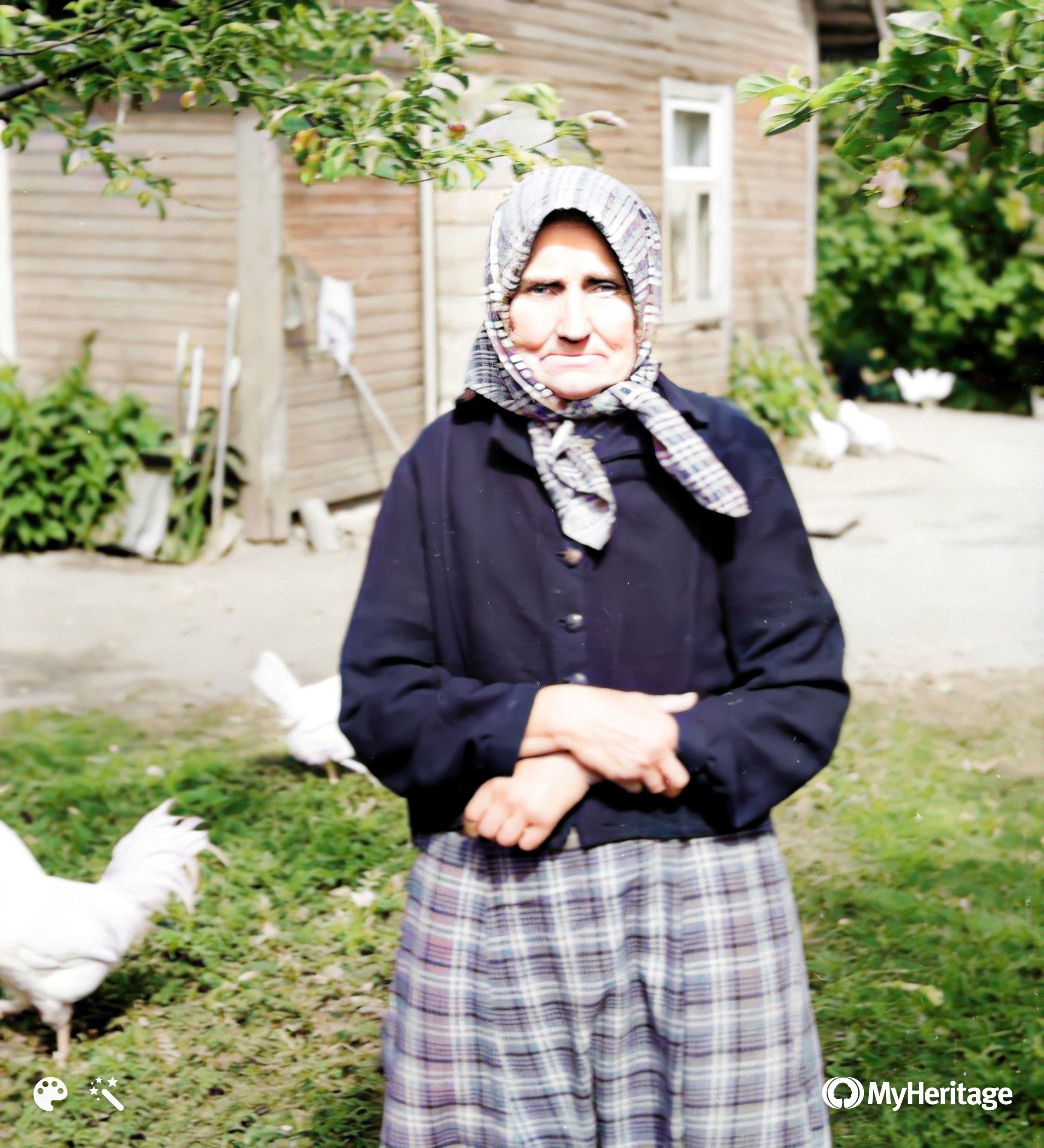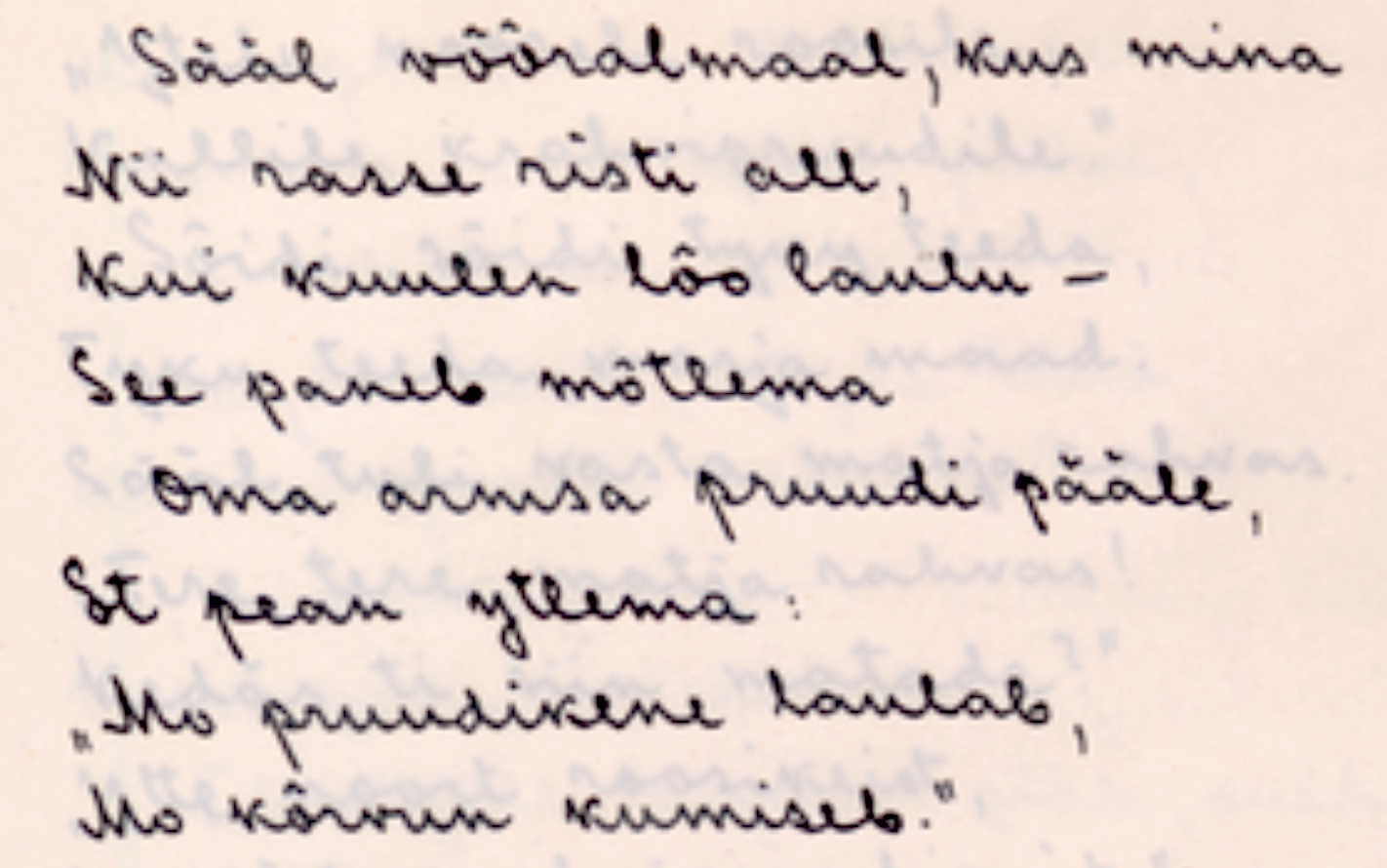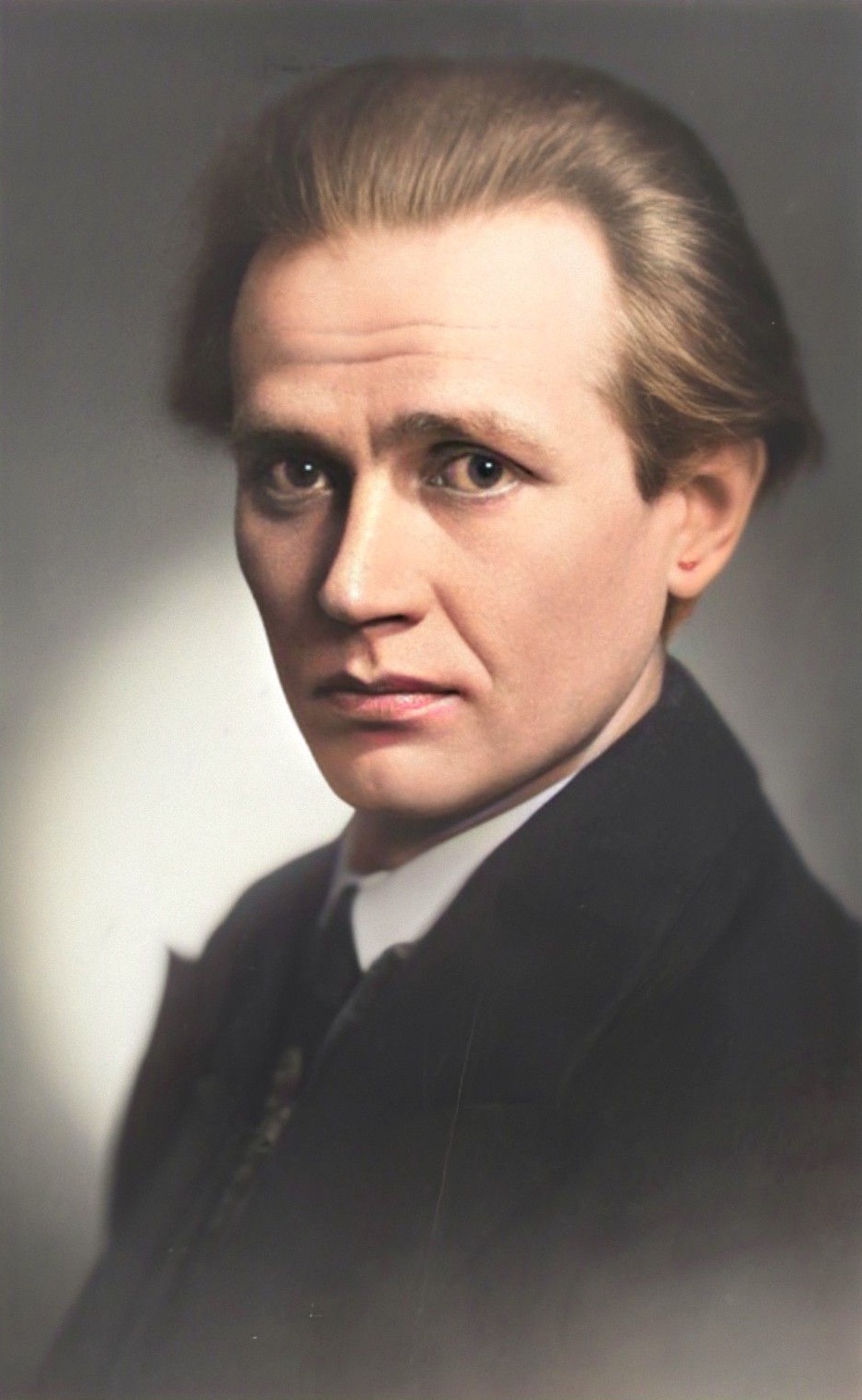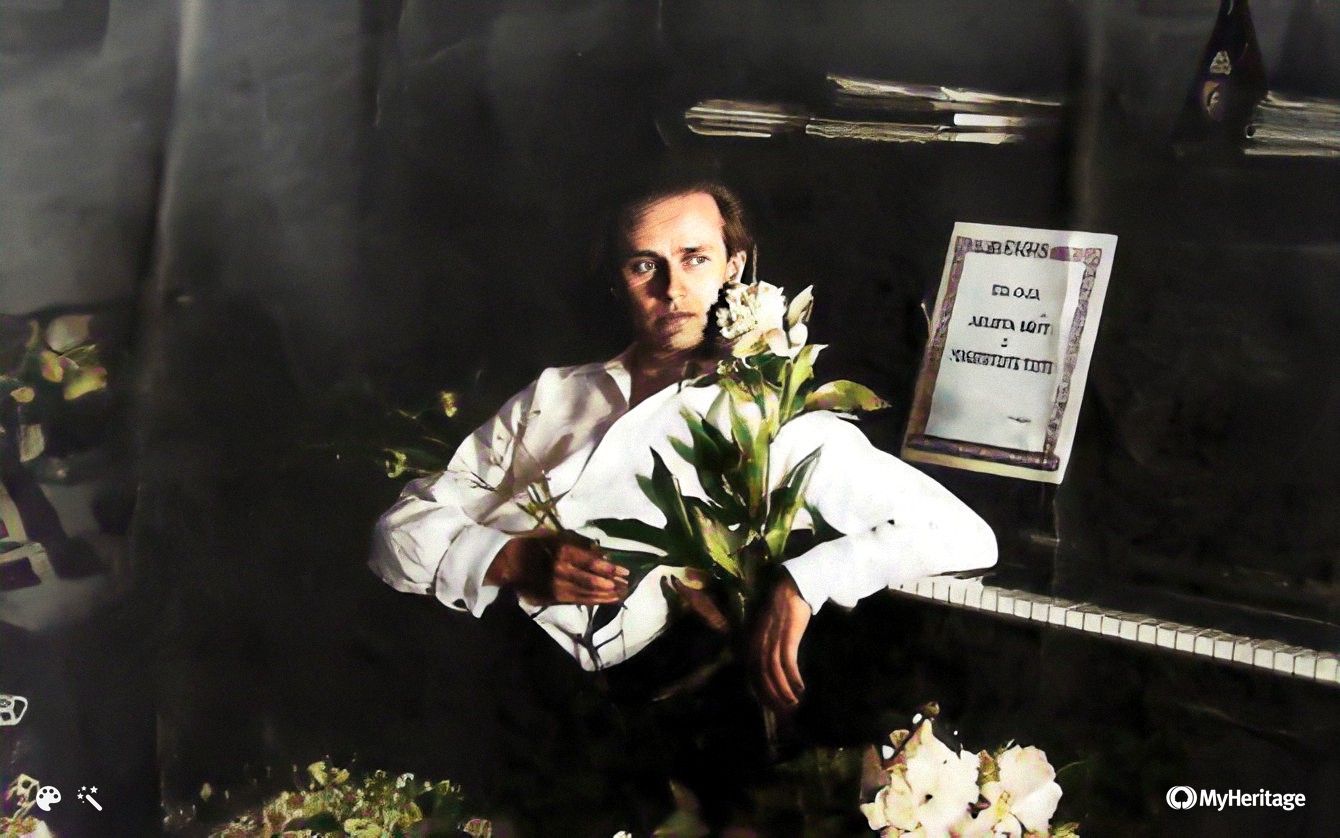Linnuk

"Worry worry worry" is a remake of a traditional melody about an anxious heart from Mõniste.
During the first and second decades of the 20th century, it had been the Estonian Student Society scholarship holders and St. Petersburg Conservatory students who went on trips to collect traditional songs. However, starting from 1928, the collectors were employees and scholarship holders of the Estonian Folklore Archive. This time, the aim was to collect songs from those Estonian parishes from which there was less material in the archives. This is how grand collectors such as Herbert Tampere, Eduard Oja, Karl Leichter and many others started their work.
One such collector was Eduard Oja (1905-1950), a 25-year-old student of the composition class from the Tartu Heino Eller Music School (then called Tartu College of Music), originating from Palupõhja in the deep forests of Viljandi County.
This is how Eduard Oja and Herbert Tampere, four years his junior, reached Hargla in Valga County in 1930 with their phonograph. There, several songs were recorded from Pauliine Pehlak (also mistakenly referred to as Pihlak in some sources), 44 at the time. Among them is a song entitled "Worry worry worry", which can be listened to in the information system of the Estonian Literary Museum, Kivike.
Herbert Tampere has written the following about these trips:
"In the 1930s, the two of us visited Võrumaa. Oja had excellent contact with the people, compared to, for example, the writer of these lines [Tampere], he was like the leader of the expedition. He understood what needed to be written down and chose what was important. It was here that he learned to see the problems and understand the specifics of traditional music."
Pauliine Pehlak (maiden name Eichenbaum) was born on April 19 1885 in Mõniste.
She can be heard speaking in the 1965 radio programme "Saturday Night in South Estonia" (from 00:45:42).
Pauliine lived to old age and died in 1971. According to geni.com, Pauliine has descendants to this day.

We learned about this song by coincidence as Sulev was listening to audio recordings of traditional songs in Kivike. The beautiful melody instantly captivated us. As these recordings from 1930 are among the first ever sound recordings of Estonian traditional songs, the quality is quite low and it was almost impossible for us to understand the exact words. It took a long time to find them, thanks to the help of Olga Ivaškevitš, the archivist of the Estonian Literary Museum.



Regarding the lyrics, it seems to be a soldier’s song. As is the case with other melodies sung by Pauliine Pehlak, it might be of Latvian origin.
As mentioned before, we were captivated by the song straight away, but the words seemed a little too naive for a modern arrangement. Therefore, Sulev Reisberg came up with a new set of lyrics, combining different worry-themed phrases commonly used in runic songs. Only the first line of the original lyrics has been kept.
Please note that in the original recording, the fourth bar is shortened. This 'inaccuracy' has been corrected in the sheet music. However, we think that this shortened beat adds a certain kick to the song and have therefore kept it in our arrangement.

Eduard Oja was an exceptionally talented and original Estonian composer, characterized by boundless emotion and imagination. His soundscapes fluctuate between two extremes - sadness and arrogance, the tragic and the comic. The pianist and musicologist Vardo Rumessen has said that Eduard Oja’s soul always longed for beauty.
"Oja's soul sings, Oja has a melodic talent, which I do not have. He is a restless soul, his life a constant burning, sometimes I am afraid he burns too fast…"
Heino Eller, his teacher
"Eduard Oja has been one of the most talented composers of all times in Estonia. If not even the most gifted. There are other talented people among our famous composers, yet there is something dazzling about Eduard Oja’s gift. Such a dazzling gift does not occur often, just like that. It is the kind where a person has touched the fire, like Prometheus, and has become the chosen one - thereby also losing the ability to live a tolerable human existence."
Composer Jüri Reinvere
"Exuberant and frenzied, like a messenger from another planet, fading and evanishing on ours."
Music journalist Ia Remmel
Listen to this irresistibly exuberant energy in the third part of the Aeliita suite, which depicts the dance of the strange birds on Mars - the Magazites (performed by Liisi-Mai Krigul):

In addition, Oja can undoubtedly be considered a modernist of his time - he was innovative in music, looked for new colours and techniques and, for example, for the first time in Estonia, used the so-called octatonic scale, where instead of the usual seven notes, the octave is divided into eight. This gives his music a very unique sound. Probably in the same year that Oja went to record "Worry worry worry" (1930), he composed one of his most prominent and perhaps best known works for the piano, "Vaikivad meeleolud", [Silent Moods], using the same scale.
Listen to "Silent moods" performed by Mati Mikalai:
Oja also worked as a music teacher and choral director in both Tartu and Elva. He became famous primarily for his choral songs, although he composed in many different genres (solo songs, piano pieces, opera, he was one of the first creators of symphonic music in Estonia). His well-known choral song "Kangakudumine" [Weaving] can be heard here (performed by the Estonian Philharmonic Chamber Choir, conducted by Tõnu Kaljuste):
The source of the song is considered to be a dance motif heard from Pauliine Pehlak and recorded by Oja:
The highlight of Eduard Oja's work was produced in the 1930s. Unfortunately, his life was short and tragic. His emotional but fragile soul, his career and health were devastated by interpersonal tensions and lack of self-fulfillment, constant feelings of inferiority, and lack of money, followed by alcohol and depression. However, the final blow was delivered by World War II and the subsequent occupation. Many of his works, especially his masterpieces, were destroyed during the March 1944 bombing in the Estonia Theatre broadcasting music collection as well as his home in Tartu at 37A Kesk Street. Thus, today we can know only from the reviews of that time what extraordinary works Oja had created, while many of the works themselves no longer exist. He died at the age of 45 from long-term pulmonary tuberculosis. Apparently, all these circumstances are the reason why he has remained in the shadow of many other composers of that time and, in a sense, a mystery to this day.
The musicologist and pianist Vardo Rumessen has written a book about Eduard Oja entitled "Varjus ja valguses. Eduard Oja." [In Shadow and Light. Eduard Oja.] Aare Tool wrote his a doctoral dissertation on Oja’s musical forms in 2016. You can also listen to Klassikaraadio's programme about Eduard Oja and his work.
The first version of "Worry worry worry", where the general form and harmony of the song was established, was completed in April 2019, with the final rendition coming together almost two years later. According to our knowledge, this traditional tune has never before been published or arranged.

Performed by:
Helen Saarniit (vocals)
Sulev Reisberg (vocals, instrumentals)
Lyrics:
Sulev Reisberg
Arrangement/mix:
Sulev Reisberg
Advice:
Ülle Sirkas
Mastering:
Allan Kasuk
Released in:
2022
Research by:
Sulev Reisberg
Translation by:
Helen Saarniit